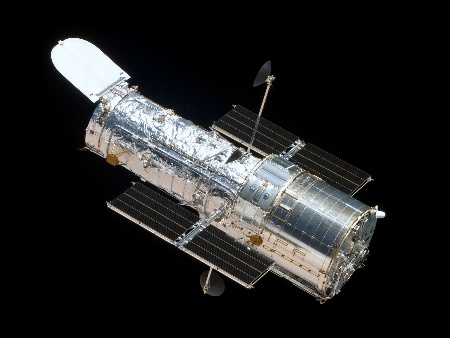Description

Copyright infringement not intended
Context
- The James Webb Space Telescope, NASA’s most powerful telescope, is scheduled to be rocketed into orbit no earlier than December 22. Though Webb is often called the replacement for the Hubble Space Telescope, NASA said it prefers to call it a successor.
Hubble Telescope
- The Hubble Space Telescope (often referred to as HST or Hubble) is a space telescope that was launched into low Earth orbit in 1990 and remains in operation.
- It was not the first space telescope, but it is one of the largest and most versatile, renowned both as a vital research tool and as a public relations boon for astronomy.
- The Hubble telescope is named after astronomer Edwin Hubble and is one of NASA’s Great Observatories, along with the Compton Gamma Ray Observatory (1991–2000), the Chandra X-ray Observatory (1999–present), and the Spitzer Space Telescope (2003–2020).
JWST
- The James Webb Space Telescope (JWST or “Webb”) is a joint NASA–ESA–CSA space telescope that is planned to succeed the Hubble Space Telescope as NASA’s flagship astrophysics mission.
- JWST will study various phases in the history of the universe, from the formation of solar systems to the evolution of our own Solar System.
- The telescope must be kept very cold in order to observe in the infrared without interference, so it will be deployed in space near the Sun–Earth L2 Lagrange point.
- Also a large sunshield made of silicon-coated and aluminium-coated Kapton will keep its mirror and instruments below 50 K (−223.2 °C).
Differences between Webb and the Hubble Telescope
- Wavelength: The James Webb Space Telescope will observe primarily in the infrared range and provide coverage from 0.6 to 28 microns. The instruments on Hubble see mainly in the ultraviolet and visible part of the spectrum. It could observe only a small range in the infrared from 0.8 to 2.5 microns.
- Size: Webb’s primary mirror has a diameter of 6.5 metres. Hubble’s mirror was much smaller – 2.4 metres in diameter. So, Webb will have a larger field of view compared to the camera on micron
- Orbit: Hubble orbits around the Earth at an altitude of ~570 km. Webb will not orbit the Earth. It will orbit the sun at about 1.5 million kilometres away from Earth.










